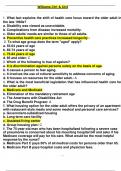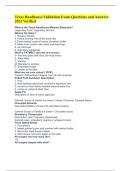Exam (elaborations)
Test bank basic geriatric nursing 7th edition by patricia a. williams chapter 1-20 complete guide
- Course
- Institution
- Book
Test bank basic geriatric nursing 7th edition by patricia a. williams chapter 1-20 complete guide
[Show more]




